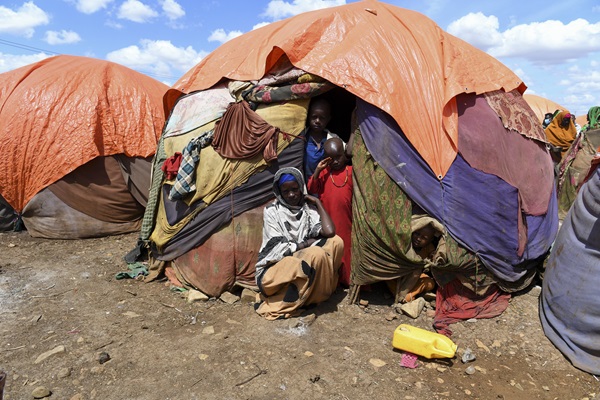
Rome – With famine fast approaching in Somalia, there is still time to turn the tide by addressing the immediate needs of rural communities who are amongst those at greatest risk, the Food and Agriculture Organization of the United Nations (FAO) said today in the context of the recently released food security survey findings. However, unless this is accompanied by massively scaled up investment in resilience and livelihoods support, we will never change this continued pattern of hunger extremes.
Somalia has been on the brink of famine in recent months due to the historic drought triggered by five consecutive failed rainy seasons, skyrocketing food prices and intensifying conflict.
The Integrated Food Security Phase (IPC) Acute Food Insecurity analysis specifically flags elevated mortality levels in some of the most exposed areas. According to the latest projection update, between January and March 2023, 1.9 million people are expected to be in IPC Phase 4 (Emergency) conditions, increasing to 2.7 million people between April and June. Up to 727,000 people could face catastrophic food insecurity by June 2023, meaning starvation and death.
“The situation in Somalia remains dire. Current levels of humanitarian assistance are helping to prevent extreme outcomes, but they are not sufficient to halt the threat of famine beyond a few months at a time,” said Etienne Peterschmitt, FAO Representative in Somalia. “People are dying in IPC Phase 4. Yet, still there is an unrelenting focus on famine declarations as a trigger for action. Real action needs to be taken not only to help communities meet their immediate needs, but also so they can adapt their livelihoods and build resilience in the face of climate crises and economic shocks, preparing them for whatever the future may bring.”
“Sustained levels of at-scale support will be required well into mid- to late-2023 if we are to prevent, not just delay famine,” he added.
Rural communities are most at risk
The extended and unprecedented drought conditions have left pastoral, agropastoral and farming communities unable to cope. Rural farming and pastoralist communities, as well as displaced communities who are overwhelmingly from rural areas, are among those most at risk of famine. Their survival depends on the survival of their herds and ability to grow crops, which have been severely hampered by the extended drought. Their children’s nutrition is inextricably linked to the health and productivity of their animals. Unable to produce milk, those animals have been dying at a shocking rate for the last year.
It is crucial to save livestock and keep them fed and healthy since they are the only source of food and income for many rural communities. Preliminary findings from an upcoming study in the Horn of Africa indicate that keeping livestock fed reduced the risk of acute malnutrition by up to 11% and of child stunting by up to 8% in pastoralist communities. Providing this assistance is relatively cheap, averaging at about $0.40 per goat compared with $40 to replace the goat.
FAO will continue providing range cubes and vaccines for animals and restoring water holes, alongside cash assistance to help people meet their basic needs.
Livelihoods support severely underfunded
Rural livelihoods assistance saves lives, helping people to remain in their homes when it is safe for them to do so and paving the way for future recovery. Currently, a lack of large-scale funding for livelihoods support, climate‑resilient food production and development priorities poses great challenges. This leaves livelihoods and the productive sectors they depend on, weak and vulnerable to climate and economic shocks.
FAO’s response to the crisis
From May to December 2022, under the Famine Prevention Scale-up Plan, FAO has reached more than 700 000 individuals across 35 districts with cash, more than 40 000 individuals with agricultural inputs such as seeds, animal feed and fertilizers, treated 11 million animals to support their survival and trucked 27 million litres of water to remote areas.
Over $24 million in cash, alongside livelihoods assistance, has been provided to rural communities who are most exposed to famine.
Furthermore, FAO plans to reach over a million more people in the coming months.
Although FAO’s appeal is expected to be 70 percent funded within the year, additional funds are still urgently needed to provide life-saving support through cash transfers in hard-to-reach and inaccessible rural areas, as well as to secure the main Gu season harvest, and ensure those who can plant receive inputs on time.